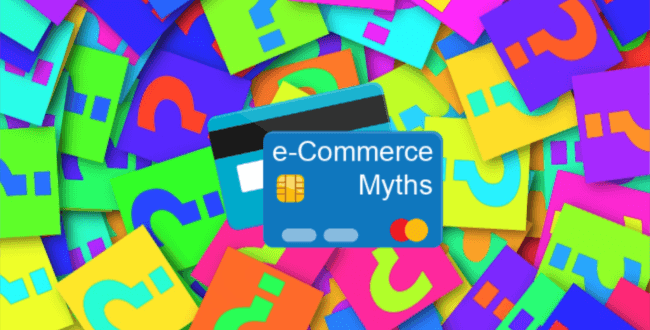
E-commerce continues to change the way we live, work and play, and much of the disruption taking place has somewhat paralyzed online merchants. Many US online merchants, in particular, are paralyzed at the thought of selling across local borders – distinctly fearing a combination of unforeseen scenarios from fraud to security concerns and constant chargebacks.
Frankly, they have it all wrong – and it’s hurting their chances in taking advantage of the abundance of e-commerce sales offered on a global scale.

Recent PPRO research reveals that in the US only 11% of total e-commerce revenue came from cross-border sales in 2017 – a stark detriment considering the world’s admiration for American brands.
When it comes to expanding e-commerce business outside of local borders, there are many false facts floating around for online merchants. The truth is that there are many different payment options that specific global regions prefer. Many US-based online retailers are misinformed about local payment methods and the benefits they can bring to their business as well as global consumers.
It’s time to debunk these misconceptions.
Let’s share a few common myths in the current e-commerce climate and reveal the real truths behind them.
Myth 1: American merchants are reaching their full potential selling throughout the US

Many US based retailers are only selling to consumers within American borders. In fact, 64% of American merchants only sell to US consumers. This is causing American merchants to fall behind some of their global counterparts. Cross border sales represent 40.6% of all revenues in Western Europe and 34.7% in Asia.
Fact: Global markets present a great opportunity for US merchants to expand.
Emerging global markets represent a great way for US merchants to expand operations globally. According to PPRO, 64% of Canadian consumers shop cross border and this rises to 66% for Mexico. Currently, only 36% of US merchants sell cross-border. This figure should be much higher as US merchants are ultimately leaving billions of dollars on the table. By 2021, US cross-border e-commerce is expected to rise to $203 billion.
Myth 2: Offering credit card payment options is enough to reach global e-commerce shoppers

Credit cards are a very popular payment method in the US where 57% of all online purchases are paid by card. Most American merchants offer them as their main payment method as US credit card penetration is 66%. Just about every consumer has a credit card, so many merchants believe there is no reason to look to into other payment options.
Fact: Online merchants need to offer a variety of local payment methods to connect with global consumers
Not every consumer uses the same payment method. In fact, different global markets have different ways that native consumers prefer to pay for goods. These are referred to as local payment methods or LPMs. LPMs are payment methods outside of traditional credit cards and brands that facilitate the needs of different geographies, cultures and domestic economies across the globe.
LPMs tend to be market and geographically specific and are many times preferred by the majority in a specific region. For example, an American consumer and a shopper in the Netherlands will have vastly differently preferences when it comes to online payments.

While Americans mainly prefer to pay with credit cards where 57% of purchases are paid as such, consumers in the Netherlands prefer to use online bank transfers like iDEAL. These payment preferences vary across different regions around the globe. In China, for instance, 49% of online payments are made by e-wallet, while 70% of online purchases in the Ukraine are handled with cash.
Myth 3: Global customers are only driven by competitive pricing.
A popular method of sales is offering the lowest price possible. Many online merchants believe that the only way to attract customers worldwide is through competitive pricing.
Fact: Ease and convenience are just as important as competitive pricing

While offering low prices is very vital to consumers who frequently shop online, ease and convenience of payments is just as important. Global consumers want to pay for goods with methods they are most comfortable with – or they will go elsewhere. Almost 50% of consumers will end a transaction if their preferred payment method is not available. Offering local payment methods catered to the needs of global consumers will lead to higher sales conversions.
With 85% of the world’s spending power outside of local borders, US merchants should look to scale their business models globally to reach a new wave of consumers. The global middle class is rising, and American good are in demand. By offering locale payment methods, US merchants can make global consumers feel more comfortable with transactions and in turn, reap the financial benefits.

Guest post by: Steve Villegas VP of Partner Management for global payments provider PPRO

